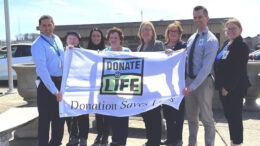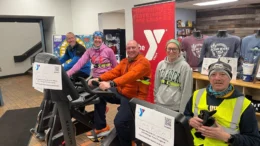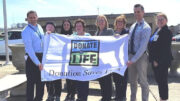Venango County commissioners offered a breakdown at their meeting Tuesday of how the county spent the $4.575 million in CARES funds it received.
About 50% of the funds, $2,310,155, went to direct county response, according to a handout provided by the county.
Direct county response includes things such as cleaning, equipment and software that allows employees to work remotely, personal protective equipment, COVID testing for county employees, COVID associated costs at the county nursing home, hazard pay for county employees who qualified and other allowable payroll costs, said Diona Brick, the county’s chief financial officer.
About 38% of the funds ($1,750,554) went to small businesses in the form of grants of up to $5,000 apiece, according to the handout.
More than 365 businesses in the county received funding. They included bars, restaurants, hair salons, barbershops, retail stores, construction companies, funeral homes, trucking companies, excavators, golf courses, gyms, insurance agencies, dentists, optical practices, car dealerships, childcare facilities, pet oriented businesses, antique dealers, transportation services, logging companies, therapists, real estate businesses and dance studios.
Grants of up to $5,000 were given to 56 nonprofits, including museums and churches. The total amount disbursed to the nonprofits was $250,425, or about 5% of the CARES money.
Each of the 18 volunteer fire departments in Venango County received a $10,000 grant, representing about 4% of the funds.
In addition, about 1% of the money went toward broadband projects and about 1% went to cover the costs of administering the CARES funds, the handout said.
In other virus related news, the commissioners said Tuesday many things related to distribution of the COVID-19 vaccines are still up in the air.
“The guidance changes day to day,” commissioner Albert Abramovic said.
Commissioner Sam Breene said the county doesn’t have a say in who get the vaccines, which are given directly to hospitals for distribution according to the government’s phased vaccination plan.
Abramovic said CVS and Walgreens, who are contracted to distribute the vaccines in nursing homes, receive their supply directly from the federal government.
“We don’t have a supply of vaccines sitting in a room somewhere. They are given directly to hospitals,” Breene said.
Breene said the commissioners are receiving daily updates on the vaccine situation from members of the county’s Emergency Management Agency and 911 team who are working directly with UPMC Northwest.
The commissioners said they are also in contact with the Department of Health.
The EMA and 911 team was tasked with finding an appropriate site for public testing and if asked they will find a site for public distribution of the vaccines, Breene said.
Breene encouraged people to be patient and to get the vaccine when it becomes available to them.
“Originally they were talking about the vaccine being available in the springtime. It’s hard to be patient but premature to panic,” Breene said.








































